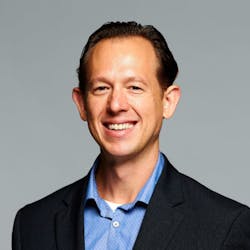Human capital. While it’s a phrase we are all used to hearing, it’s not one of Joel Philo’s favorites. “We aren’t really capital, as you would think of equipment as necessary capital to run a company,” Philo, a principal behavioral scientist at Infor Talent Science, explains. “We are human beings with abilities and behaviors that are unique to each individual. We can’t just be picked up from one area of the company and moved over to another.”
To illustrate this point, he uses the example of tracing a refrigerator through production in order to optimize the process. “You can’t just follow a human being around their workday and try to optimize their processes. People have a conscious and they have needs,” Philo says.
It’s determining what these needs are and how best to measure and then match them with jobs that have been Philo’s life work as an industrial-organizational psychologist.
Philo feels a positive approach that helps people unlock their true potential, as opposed to optimizing performance, is the key to a strong and successful workforce. And using behavioral management, which he has applied at manufacturing companies before joining Infor, is the way to achieve that objective. It’s the ability to take behavioral data, gleaned through assessments, and apply them to analytic solutions that can result in a better match of talent to jobs.
While this method might not be entirely new, the adoption rate of this method is increasing. How a company introduces a new talent management program makes a difference. “When we start a new program with a company, we provide communication templates to be shared with employees that explain that these assessments are being used to help with career planning, not layoffs. This is a tool to be used for ongoing dialog,” says Philo.
"What has been interesting is that by using a tool that looks into what is expected and measured, we can help eliminate discrimination,” he adds. Infor has seen a 26% increase in the diversity of talent for the companies that have implemented its Talent Science program into their hiring process. The results were based on a sample size of 51,106 employees, which included both management and hourly positions.
“I think that shows the power of using this type of assessment to eliminate unconscious bias,” he added.
An Easy-to-Use ToolThe assessment isn’t complicated and generally consists of about 120 questions, based on 26 characteristics, and measures what Philo calls their behavior DNA. The questions aren’t difficult but point directly to strengths and preferences. For example, they ask about a person’s ambitions, whether they prefer teamwork or rather work alone, and how much recognition they would desire.
These preferences are turned into a predictive model, which is then matched against the needs of a particular job. It can also be used as a tool to help guide an employee’s career track. While most companies do identify “high potential” employees, this system is more exact as it’s based on data, rather than only the opinions of those in decision-making roles.
For the employee, the analysis is useful as well. Philo calls it the “happy report” and says it can be a key to self-discovery.
Looking more carefully at the skills needed to perform specific jobs can also lead to expanding a company's view of job requirements. “This method could result in a company finding entrepreneurs who would be perfect for the job but had been overlooked based on previous degree requirements,” says Philo.
Promising Results
Using data to improve how talent is attracted, acquired and retained has been successful. Retention is a large concern for manufacturing companies and this method can help. Philo gives the example of a company that had two factories in one country. When the assessment was given at one plant and the data used to improve workforce management, the turnover was significantly lower, 48%, than the other plant which didn’t use the assessment.
Once the immediate need of retention is solved, companies can dig deeper into the many causes of why people stay with an employer. Focusing on the future workforce, the need for a more human approach to workforce management is evident in how this generation views both work and employers. “This generation is looking for both meaningful work and how their work contributes to society,” says Philo. “The connection between the work someone does and how it improves society is essential.”
And a big first step of course is realizing the unique abilities of your workforce, both current and future. Managing people should give way to coaching people. “At the end of the day this a tool to empower people,” says Philo.





